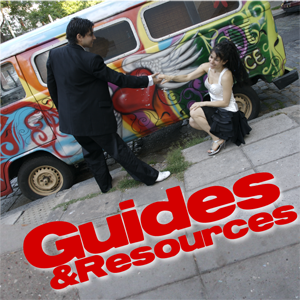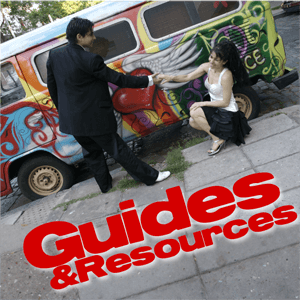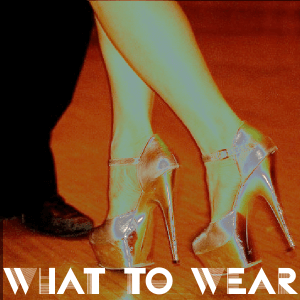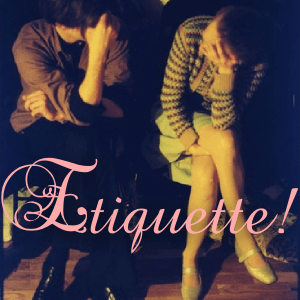This is a first draft of a code of ethics. You are welcome to submit additions and comments by email to office@tangoforge.com. Thank you to all those who take time to share their wisdom (most have asked not be named). I will improve the code, and summarize areas of disagreement in footnotes and addenda. This code of ethics is not about the codigos or tango etiquette. Ethics are a different matter than etiquette.
Community groups and professionals are welcome to use and modify this Code, under the following conditions:
[1] Give credit: “Based on the TangoForge Code of Ethics for Tango Communities” and provide URL link to original //tangoforge.com/community-ethics-code/
[2] Use some kind of bold/colorcode scheme to demaracate your additions and collect any excised parts at the bottom of your new document under the heading “Items excised from the original TangoForge code”.
A code of ethics has three standard parts, the preamble which gives it context, the fundamental moral principles, and standards of conduct.
Context
Tango is a social dance which welcomes people of diverse cultures, ages, and physical abilities. It is a living art, originating in cultural fusion in Buenos Aires, and now practiced and developed globally. It is also an industry, which does not have professional training, certification, or standardization. Due to the porosity and horizontality of tango events and communities, participants need to take initiative in protecting people from fraud, abuse, and the collateral effects of others’ conflicts. Given the use of traditional gender roles and identities, the experiences and empowerment of women are a special concern.
Principles
• Tango is egalitarian with regard to class, race, gender, nationality, age, and sexual preference.
• Tango respects personal integrity, by exercising due caution in the shared physical space, practicing formal etiquette and consent, and welcoming individual expressiveness.
• We treat the experience of the dance as sacred.
• Tango emerges from and continues to develop through cultural fusion and innovation.
Code of Conduct
- The best way to honor Argentinian culture for the gift of tango is to adopt its universal, persistent, and unconditional graciousness toward people. Foreigners should be aware that graciousness is considered to be basic, not superlative, and is the foundation of Argentine business culture, so an Argentine who fails to take good care of relationships is operating far outside cultural norms and should be treated with caution, as an aberrant.
- Take care of people’s egos and emotions. Tango challenges our physical, emotional, intellectual, and spiritual capacities – all at once! We are more vulnerable to criticism and sentiment than in other things we do. The codigos are designed to protect egos and emotions. Dancers abstain from sexualized touch during instruction and dancing (unless dancing with a lover).
- Take care of the social and physical space to maximize the possibility that dancers can have an undisturbed beautiful, sacred, and creative experience. This means everyone present shares responsibility for care of the surface of the floor, the flow of the line of dance, the condition of the perimeter, noise levels, and attitude. Grumpy scowls intimidate. Sweet smiles encourage. Everyone dances better when encouraged and admired.
- Take care of new people so they don’t get traumatized and never come back. Ways to take care of new people: Invite them to sit with you, introduce them to dancers near their level, explain the culture and codigos to them.
- Make sure your pleasure is coming from dancing, not from criticizing others’ dancing.
- Protect the women. Warn women about tango men who have left a string of broken hearts, hurt their dance partners, demoralized their students …
- Express solidarity with your sisters/brothers in tango. Tango can as devastating as it is elating. You may be having a good night tonight, but you know that another night, in another city, you may be one of the ones suffering. If you’re having a good night, it’s your chance to be sympathetic and generous, rather than taking all you can get. Don’t monopolize a dancer, don’t play dirty with the cabeceo. (The cabeceo is not just a repudiation of sound, it’s a repudiation of demand.) Note the relevance of sportsmanlike conduct, which cultivates the virtues of fairness, self-control, courage, persistence, fellowship and respect for opponents.
- Observe, reflect, dialogue. Tango is a more gender-conventional space than our countries, cultures, and daily lives. How much sexism is too much? Participate in dialogues about how much of this is ok-play and when/where it might become problematic and disempowering to women.
- Recognize and contain bullies. Bullying is behavior which seek to gain domination by repeatedly demeaning others. In tango communities, this behavior can take the form of intimidation, upbraiding fellow dancers, name-calling and other verbal abuse (direct or indirect) designed to disrupt the status and prospects of others. Identify bullies and befriend those who are isolated and vulnerable to bullies.
- Don’t start or abide fights. Fights between teachers and organizers can fracture tango communities for years, affecting the social lives of future generations of dancers. Every community should enforce a conflict-resolution mechanism to prevent two short-sighted “professionals” from screwing up the tango landscape for everyone.
- Responsible barter. If someone offers a ride, housing, or food, the general expectation is that the recipient will dance with them (or with their partner) at the next opportunity and thereafter in a rough quantitative ratio to what was bestowed. If you are receiving free stuff, you are in debt. Organizers and dance partners who facilitate significant career moves for a professional have purchased a long-term bond and will expect to be repaid for years. Consider this before accepting “free” assistance.
- Teaching competence. Don’t rely upon (as a pro) or be fooled by (as a student) manipulative forms of teaching such as claims to authenticity, putting others down, flirting, jokes and making fun, showing off, or bragging. If a teacher can’t explain how to do something in such a way that the students can do it by the end of the class, they are not competent, regardless of how nice, entertaining, demoralizing, impressive, profound, scornful, or sexy they are.
- If you are taking people’s money, take responsibility: Teachers need to engage in self-assessment with regard to student outcomes and consequentially to refine their teaching to be more effective. They are also responsible for socializing students to the codigos and hygiene. Organizers of social events are responsible for, at minimum, water, attractive lighting, temperature (especially in places where women sit waiting), and a welcoming social atmosphere.
- Disrupt bigotry against queers, women who mark, and creative dancers. Withdraw financial support from and speak up for human rights to organizers who express negative attitudes toward consent, role variation, and self-expression.
Arrogance is not elegant.
Powerlessness is not sexy.
Tango is not a permit to hurt women.
Contempt is not creative.
* About the term ‘sacred’: The term is now used to refer to secular sacreds. See the Oxford English Dictionary definition, entries A1b (“Dedicated, set apart, exclusively appropriated to some person or some special purpose”) A4a (“Regarded with or entitled to respect or reverence similar to that which attaches to holy things”) and A5d (“Devoted to some purpose, not to be lightly intruded upon or handled”). Also see the work of Dr. Veikko Anttonen. Excerpt below from “Toward a Cognitive Theory of the Sacred: An Ethnographic Approach“, Folklore Vol 14 [2000].
“The sacred as a religious concept is inseparably linked with the linguistic conventions of Western societies, the roots of which go far back into the history of both Indo-European and Semitic cultures. Long before its conventionalised use and meanings within the Jewish, Christian and Islamic religious traditions, people have participated in sacred-making activities and processes of signification according to paradigms of thought created by their ethnic systems of belief within specific geographical limits. The sacred is not only a religious term, but also an anthropological constant, which has been used in various cultural contexts within various arenas of human discourse…In postmodern Western societies, there are millions of people who no longer accept the inherited religious traditions of their parents and ancestors as a grand theory for their lives…The old religious structures have become desacralised and new or unconventionally defined forms of religious sacralisation invented. People have greater intellectual and moral freedom to create their own “sacred” moments within their secular cosmology, by setting apart specific times, places, events and persons and marking their significance by specific symbolic means… [V]arious forms of performance in the worlds of sport or art, can be comprehended in terms of the category of the sacred. These forms of behaviour are culturally based on the idea of using specific ritual strategies to mark one’s physical and mental self as separate from the routines of everyday social life… [It’s possible to study] the actions, events and intentions of cultural agents in specific contexts as they make distinctions between spaces, mark them for specific uses, create visible and invisible boundaries, and establish cultural conventions of behaviour towards those boundaries…[as well as] affective, ineffable, inconceivable, mysterious, awesome qualities…”
A couple who are dancing are to be left alone in their reverie, the nature of which is mysterious and precious. Interruption or disruption of a dancing couple during a song is probably the worst violation in tango, because it despoils the highest possible virtue of our mutual presence, the potentially divine (whether spiritual or secular) experience underway.














